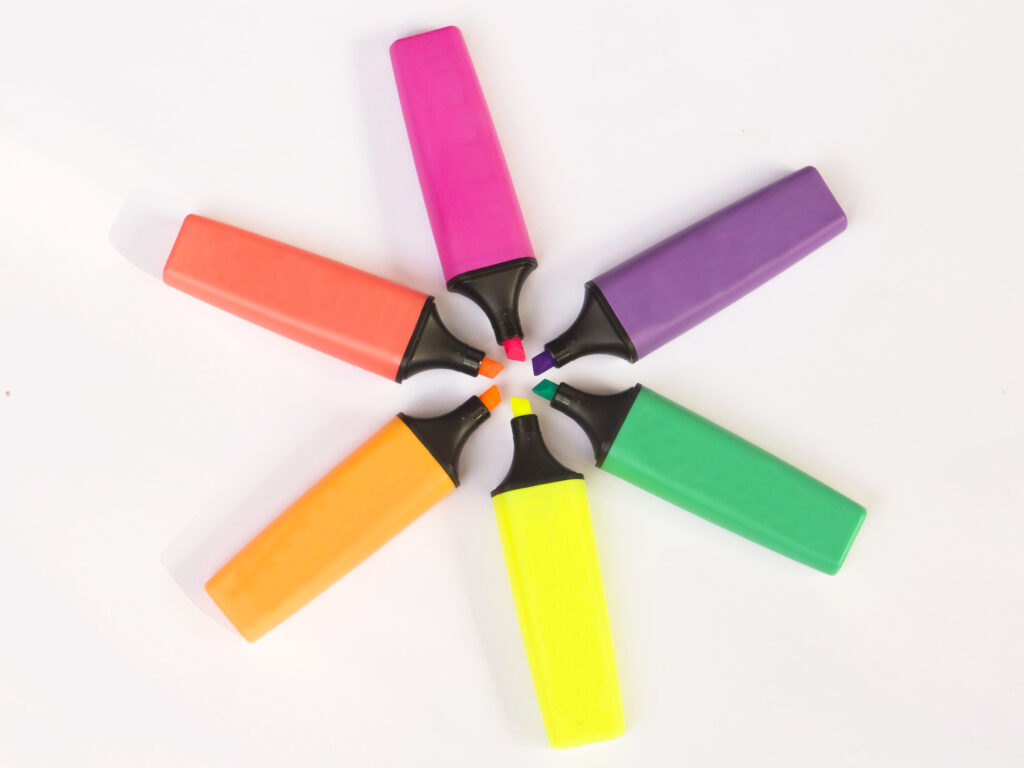Alan Matthews makes the case, not just for training accessories, but the training that follows them.
Have you been on a training course recently (or run one yourself) where there have been some little toys on the table - springs or bendy men? Or sweets? Or music playing when you went in? Or those smelly felt pens (the brown ones are cinnamon, in case you've ever wondered but didn't want to find out).
If you've been on one of my courses, then the answer will be, "yes", at least to some of those. I don't tend to use music but I do use the other things - chocolate features quite heavily. Why? What's the point? What difference does it actually make? Good questions. And, if you're a trainer, you need to have an answer.
Because I've been on lots of courses myself where trainers have used these things. They've become popular recently as part of the movement towards what has been called 'accelerated learning' or 'brain-friendly learning'. But I suspect, like many things which become popular in training, some of the people I've seen using them don't really know why. They are either just copying something they saw on a course somewhere or, at the other extreme, they make exaggerated claims about the impact of these sort of things.
 "the whole move towards 'brain-friendly' learning is meant to reflect what we know about the brain and about learning. The problem is that what we think we know keeps changing..."
"the whole move towards 'brain-friendly' learning is meant to reflect what we know about the brain and about learning. The problem is that what we think we know keeps changing..."In the same way, I see people using inappropriate ice-breakers or 'team-building' activities which they've got from a book - but don't get me started on those.
Anyway, here's my view: the whole move towards 'brain-friendly' learning is meant to reflect what we know about the brain and about learning (the clue is in the title). The problem is that what we think we know keeps changing but here are a few key elements:
- people need to be in a positive and receptive state to learn effectively - they should be curious, motivated, relaxed, focused rather than anxious, stressed or resistant
- learning is multi-sensory - we use all our senses to take in information and we recall items more easily if we can attach more senses to them - there are more clues to help us find the memory
- the brain works better when there is some physical activity and exercise which sends it more oxygen - as opposed to long periods of inactivity such as sitting listening to someone talking
- variety is important in learning because people cannot focus for too long doing just one thing and people have different preferences for the way they approach new learning situations
So where do the toys and the smelly pens fit in? Well, I don't make huge claims for the benefits of these things but they have a place. I've heard people say that you need to have bendy men and springs to play with because they appeal to 'kinaesthetic learners' and the smelly pens make it a 'multisensory experience'.
That might be going a bit too far. I just tend to think that some people need things to fiddle with when they're concentrating or they get distracted. Whether that makes them 'kinaesthetic learners', I'm not sure. And people do seem to like the smelly pens (and chocolates) and get quite excited about them, which makes them more interested in what they're doing and happier about being there.
So, for me, they are a part of setting up an attractive and stimulating learning environment and they can play a role in the overall experience for your learners. For example, when I set up a room I want people to come in and think, "Hey, this looks interesting" I want it to look as if we might actually have some fun. I also want it to be clear that they won't be sitting there all day watching a PowerPoint presentation. This is a major part of getting people in a positive and receptive state for learning.
A word of warning, though - be mindful of your group and their expectations. Read the mood. Some groups come into a room and I can immediately tell we're going to have a great day. They love all the bits and pieces - the toys, the cartoons - they're excited and ready to get going. Others seem more reserved, as if they're thinking," What's all this? We're giving up valuable time to come here for this." They may find it a bit childish and, if so, it could set up more resistance and be counter-productive.
"There's no point just putting a few sweets and bendy men on the tables and then delivering a long, tedious presentation which ignores all the other aspects of 'brain- friendly' learning."
In that case, I often find that explaining what I'm doing helps a lot. I tell people why I've provided the toys, sweets, etc and why we'll be doing certain things during the day. That way, I make it clear I'm treating them as adults and I'm doing things for a good reason. I also say, "It's not compulsory - if you want to fiddle with a spring and eat some chocolates, go ahead. If you'd prefer not to, that's fine."
Usually, more reserved groups respond to this and gradually warm to the idea as they realise it's not just some pointless piece of silliness. But that's just the start. There's no point just putting a few sweets and bendy men on the tables and then delivering a long, tedious presentation which ignores all the other aspects of
'brain- friendly' learning. The rest of the training has to build on the positive start. It needs to be interactive, lively, engaging, relevant - otherwise the toys and sweets are just window dressing.
So, by all means, use these things in your training - but make sure the training itself is also 'brain-friendly' or no amount of smelly pens will make a difference.
Alan Matthews runs www.transformyourtraining.com









